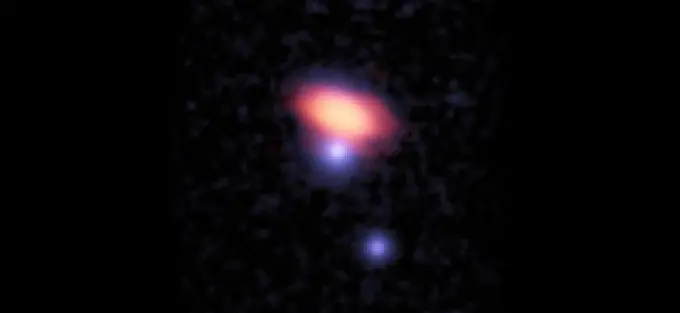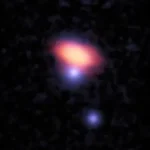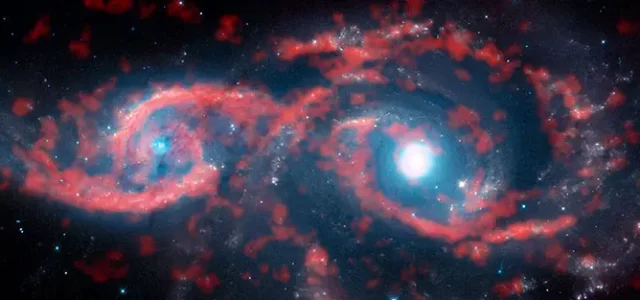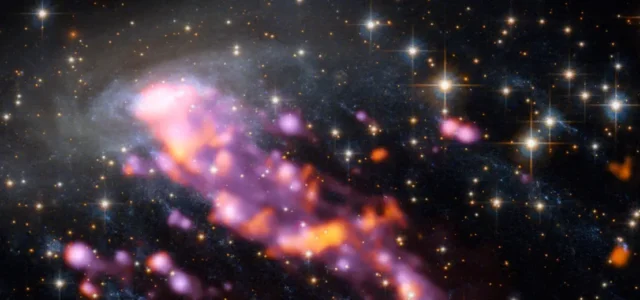Galaxy reveals its gaseous content in two ways
Read time: 3 minutes
Stars are born from large clouds of cold gas. It’s called molecular gas, since it is composed not of single atoms, but of molecules like H2 (two hydrogen atoms strung together) and carbon monoxide (CO, a molecule consisting of one atom of carbon and one of oxygen). Molecular hydrogen is hard to detect, but carbon monoxide molecules emit radiation at millimeter wavelengths, which can be seen by ALMA.
ALMA can only observe molecular gas if the density is high enough. If the gas is too tenuous, it doesn’t emit enough millimeter radiation for ALMA to detect. However, there’s a second way of detecting the presence of molecular gas. If the gas cloud sits in front of a bright object in the background, it absorbs some of the light, at very specific millimeter wavelengths. Thus, the gas cloud reveals its presence, even if it is very tenuous.
Using these two techniques, astronomers have made a surprising discovery. They used ALMA to study a distant galaxy, known as PKS0439_008_04. Throughout the galaxy, they detected millimeter radiation from carbon monoxide in relatively dense molecular gas. So far, so good.
But the astronomers also studied a much more remote galaxy (known as a quasar) that appears just beyond the visible edge of PKS0439_008_04. Certain wavelengths of light from the quasar turned out to be absorbed. Apparently, there’s also a lot of diffuse molecular gas surrounding the foreground galaxy. This gas is too tenuous to emit enough millimeter radiation for ALMA to detect. However, it reveals its presence by leaving an ‘absorption fingerprint’ in the light of the quasar.
In the distant future, the diffuse gas that is surrounding the galaxy may fall back, producing a new burst of star formation. However, that may take another few billion years.
What?

PKS0439_008_04 is a galaxy at a distance of 1.4 billion light-years in the southern constellation Caelum, the Chisel. On the sky, the galaxy appears to lie right next to a much more distant object, known as PKS0439–433. This background object is a so-called quasar – the luminous core of a galaxy, powered by a central supermassive black hole. The quasar is at a distance of 7.3 billion light-years. It looks like the foreground galaxy is not actually in front of the background quasar. Still, part of the quasar’s light is absorbed by diffuse molecular gas that belongs to the foreground galaxy.
Who?
The ALMA observations of the galaxy and the quasar were carried out by an international group of astronomers from the United States, Germany, India, Denmark, Switzerland and Australia. The team was led by Marcel Neeleman of the Lick Observatory of the University of California at Santa Cruz. The astronomers published their results in Astrophysical Journal Letters – a professional astronomy magazine.

ALMA URL



